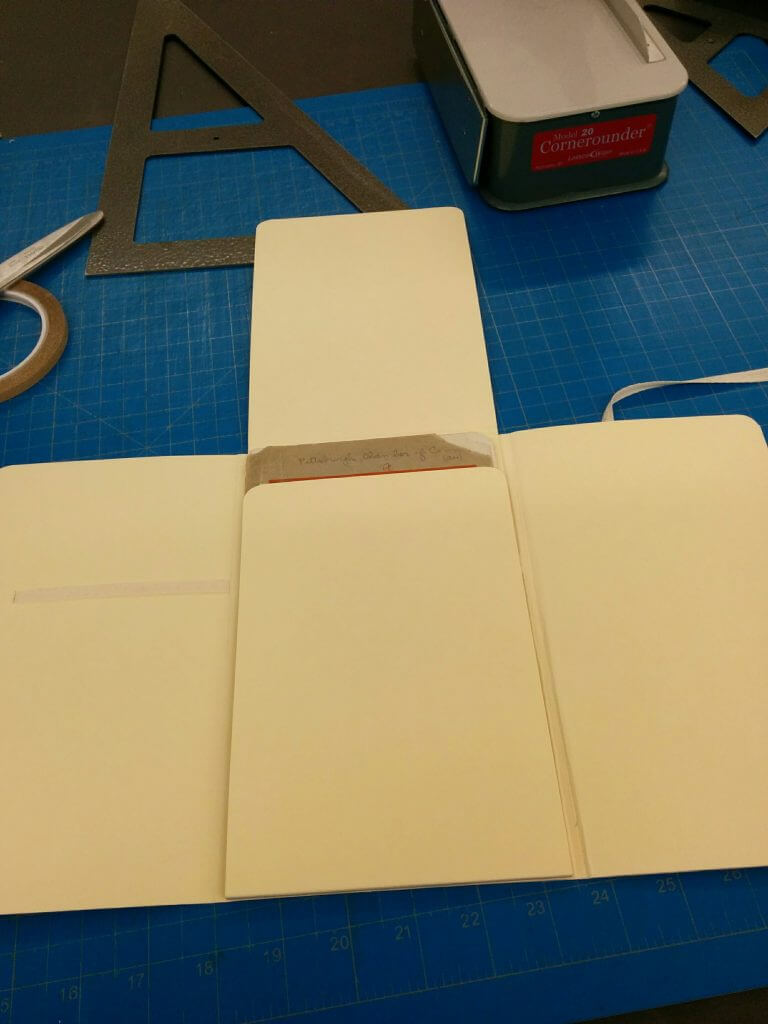Greetings again from Carnegie Library’s Conservation Preservation and Access Department. A major part of our work is making certain irreplaceable books can still be accessed by researchers and other curious patrons. When these books are almost 100 years old and extremely fragile, it can get tricky to know what to do. Sometimes, the best way to preserve a book and its information is to leave it in its delicate condition and make a sturdy safe place for it to live. This is where our custom made boxes come in! We use preservation grade materials and best practices to ensure the longest life for our collection. The last thing we want is to harm the books by using acidic boards or glues that will speed their deterioration.
One of my favorite enclosures to make is the tie box. I love its simplicity, clean design and durability. They take up little space on the shelf while keeping the fragile book stable inside. If I could wrap all the soft cover books that come into the lab in a tie box, believe me, I would! I’m sure when you see how handsome they look at the end you will all agree with me. Below are the steps (and pics!) to make one.
The first thing is to clean the book as much as possible. Remember, these have lived longer than we have, and are affected by the weather just as much! Paper made out of wood pulp when first made is flexible and clean, but does not stay that way. As it ages, it absorbs the pollutants in the air, dries out and becomes brown and brittle. I can’t imagine being a book in Pittsburgh’s steel heyday was very easy, as we are still cleaning old coal dust off the collection.


Once the book is cleaned, use it to measure your height of the enclosure, and then cut to width of the book. We use a heavy folder stock in lab.


Next, make creases where the top (head) and bottom (tail) of the book hit on folder stock. You will have to repeat this a second time where the folder stock folds to cover the book.




Oh yea,h this book is looking great! Once you have your book snug and secure in its first wrapper, we repeat those same steps, only going lengthwise. Use the book again wrapped in the folder stock to measure so the sides will be covered.





Now that your book is snug in its new case, we do the finishing touches. We still need to attach the two separate pieces together. They meet in the middle, and when the flaps are all open resemble a cross. A string is also inserted to ensure the enclosure will stay closed and keep the book safe inside.


And now, this book has a chance to survive in a digital world, almost 100 years later!





-Emma M.
Emma is a Conservation Assistant in the Conservation, Preservation and Access Department at CLP – Main. She earned a BFA in Book Arts in 2006 and has been taking books apart and putting them back together ever since.

